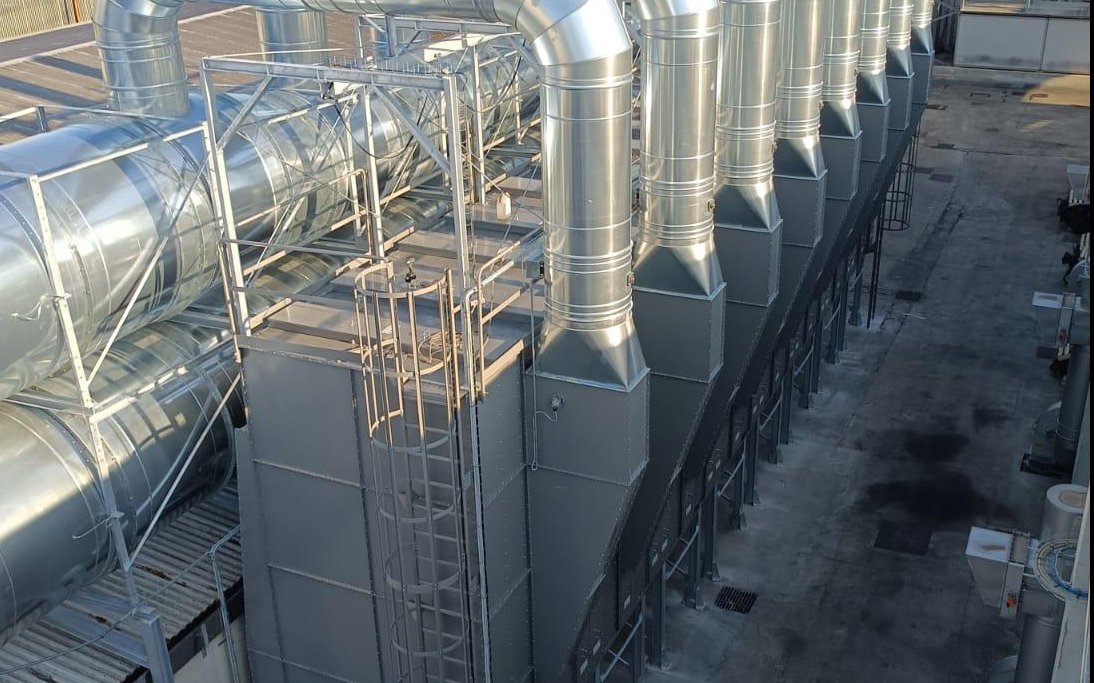The existing filtration system, consisting of a scrubber and an outdated biofilter, could no longer adequately handle the intense odors and VOCs generated during composting. This impacted not only production capacity and air quality but also posed significant safety risks for personnel.
Challenges of Composting
Composting offers numerous benefits, such as recovering organic waste and reducing methane emissions from landfills. However, it also produces greenhouse gases and air pollutants, including CO₂, CH₄, N₂O, NH₃, and VOCs, which can harm both the environment and worker health. To address these issues, the company chose Dena, a leader in industrial air filtration solutions, to design and implement a custom, innovative filtration system.
Dena's Solution
Dena addressed the challenge with an integrated approach, providing a COMBY active carbon filtration system capable of handling flow rates up to 280,000 Nm³/h. The system included a supply and return collector with a bypass to the chimney, allowing for peak emissions to be managed without compromising filtration efficiency. Additionally, sector shut-off dampers were integrated to facilitate maintenance and optimize operational efficiency.
Advanced electronic and mechanical monitoring devices were installed to ensure safety, detecting any signs of combustion or malfunction and intervening promptly to prevent incidents. This comprehensive solution met all safety and environmental protection standards for VOC and odor reduction.
Project Scope
1. Engineering Study
Dena conducted a detailed engineering study to analyze the facility's specific odor and VOC control needs, evaluating the required airflow and the most suitable safety solutions. This enabled the development of a tailored system that met the company’s production and regulatory requirements.
2. Design of Input and Output Collectors
The collectors were designed to handle higher airflow volumes, ensuring uniform distribution of pollutants through the filtration system. The design also included explosion protection devices to safeguard both the facility and workers.
3. Installation of Ductwork
A complete ductwork network was installed to ensure optimal airflow from various suction points to the dust collector, minimizing pressure losses and effectively capturing pollutants at all stages of the production process.
Results
The implementation of the DENA COMBY system delivered significant operational and environmental benefits. The increased airflow capacity allowed the company to boost production capacity while maintaining effective control over composting-related odors. The new system ensured a safe and compliant work environment, enhancing air quality.
Additionally, the integration of a HEPA filter enabled the recirculation of clean air within the building, providing substantial economic advantages. During winter months, the company reduced energy consumption by reusing warm air, lowering external heating costs. This resulted in reduced operating expenses and more sustainable energy management.
Overall, the project fully met the client’s expectations, improving productivity, safety, and energy efficiency. The DENA system exceeded expectations with its reliability and flexibility, offering a long-lasting solution adaptable to the facility's future needs.

